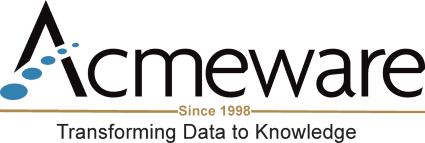CMS recently published the FY 2026 Inpatient Prospective Payment System (IPPS) Proposed Rule which includes several proposed changes to the Hospital Inpatient Quality Reporting (IQR) Program and Medicare Promoting Interoperability (PI) Program for eligible hospitals (EHs) and critical access hospitals (CAHs). For the full text of the rule, see the Federal Register.
Hospital Inpatient Quality Reporting (IQR) Program
Modified Measures
CMS proposed modifications to the following measures in the IQR Program measure set:
- Hospital 30-Day, All-Cause, Risk-Standardized Mortality Rate (RSMR) Following Acute Ischemic Stroke Hospitalization (MORT-30-STK) beginning with the FY 2027 payment determination
- Expand the measure’s inclusion criteria to include Medicare Advantage patients
- Shorten the performance period from 3 to 2 years – the new reporting period would be July 1, 2023 through June 30, 2025
- Hospital-Level, Risk-Standardized Complication Rate (RSCR) Following Elective Primary Total Hip Arthroplasty (THA) and/or Total Knee Arthroplasty (TKA) (COMP-HIP-KNEE) beginning with the FY 2027 payment determination
- Expand the measure’s inclusion criteria to include Medicare Advantage patients
- Shorten the performance period from 3 to 2 years – the new reporting period would be April 1, 2023 through March 31, 2025
- Hybrid Hospital-Wide All-Cause Readmission (HWR) and Hybrid Hospital-Wide All-Cause Risk Standardized Mortality (HWM) measures beginning with the FY 2028 payment determination (performance period: July 1, 2025 through June 30, 2026)
- Reduce the submission thresholds for both the core clinical data elements (CCDE) and linking variables to at least 70 percent of discharges for both measures
- Reduce the number of required CCDEs for both measures to allow for up to two missing laboratory results and up to two missing vital signs
Removed Measures
CMS proposed the removal of the following 4 measures beginning with CY 2024 reporting period (FY 2026 payment determination). Each of these measures is proposed for removal due to the costs associated with the measure outweighing the benefit of the measure’s continued use in the program.
- COVID-19 Vaccination Coverage Among Healthcare Personnel (HCP) measure
- Facility Commitment to Health Equity (FCHE) measure
- Screening for Social Drivers of Health (SDOH-01)
- Screen Positive Rate for Social Drivers of Health (SDOH-02)
Future Considerations
CMS is seeking feedback on potential well-being and nutrition measures for future inclusion in the IQR Program. Additionally, CMS invites comments on the use of Fast Healthcare Interoperability Resources (FHIR) in eCQM reporting.
Extraordinary Circumstances Exception
CMS proposed updates to the Extraordinary Circumstances (ECE) policy. CMS proposed that a hospital may request an ECE within 30 calendar days of the date that the extraordinary circumstance occurred. The current policy allows a request within 90 days, but this proposed change aligns the IQR Program policy with other CMS quality programs. CMS proposed that CMS will notify the requestor with a decision in writing and will include if the hospital is exempted from one or more reporting requirements or if the hospital is granted an extension of time to comply with one or more reporting requirements.
Medicare Promoting Interoperability (PI) Program
Reporting Period
CMS proposed to maintain the EHR reporting period in CY 2026 and subsequent years as a minimum of any continuous 180-day period within that calendar year for eligible hospitals and CAHs participating in the Medicare PI Program.
Modified Measures
Beginning with CY 2026, CMS proposed modifications to the Security Risk Analysis measure and the SAFER Guides measure.
For the Security Risk Analysis measure, CMS proposed to require eligible hospitals and CAHs to attest “yes” to having conducted security risk management in addition to the existing measure requirement to attest “yes” to having conducted security risk analysis. Under the proposed modified measure, eligible hospitals and CAHs would be required to attest that they have implemented policies and procedures to assess and manage security risks to electronic protected health information (ePHI) related to the use of EHRs, in accordance with the HIPAA Security Rule’s risk analysis and risk management requirements.
For the SAFER Guides measure, CMS proposed to require eligible hospitals and CAHs to attest “yes” to completing an annual self-assessment using the eight SAFER Guides published in January 2025. The 2025 SAFER Guides consist of eight guides organized into three broad groups of Foundational Guides, Infrastructure Guides, and Clinical Process Guides.
New Measure
Beginning with the CY 2026 EHR reporting period, CMS proposed adding an optional bonus measure to the Public Health and Clinical Data Exchange objective for eligible hospitals and CAHs that submit health information to a public health agency (PHA) using the Trusted Exchange Framework and Common Agreement (TEFCA). Under this proposal, an eligible hospital or CAH would be able to earn 5 bonus points under the Public Health and Clinical Data Exchange objective if the eligible hospital or CAH has attested that they are in active engagement (Option 2) with a PHA to submit electronic production data for one or more of the measures under the Public Health and Clinical Data Exchange objective using TEFCA. To attest “yes” for the Public Health Reporting Using TEFCA optional bonus measure, an eligible hospital or CAH must be a signatory to a TEFCA Framework Agreement.
Future Considerations
CMS is seeking public comment to help inform future rulemaking for the Query of PDMP measure, specifically regarding the following policy considerations: 1) changing the Query of PDMP measure from an attestation-based measure (“yes” or “no”) to a performance-based measure (numerator and denominator), as well as alternative measures designed to more effectively assess the degree to which participants are utilizing PDMPs, and 2) expanding the types of drugs to which the Query of PDMP measure could apply.
If you have questions about your hospital reporting of eCQMs, Promoting Interoperability measures, or chart-abstracted measures, please contact us.
